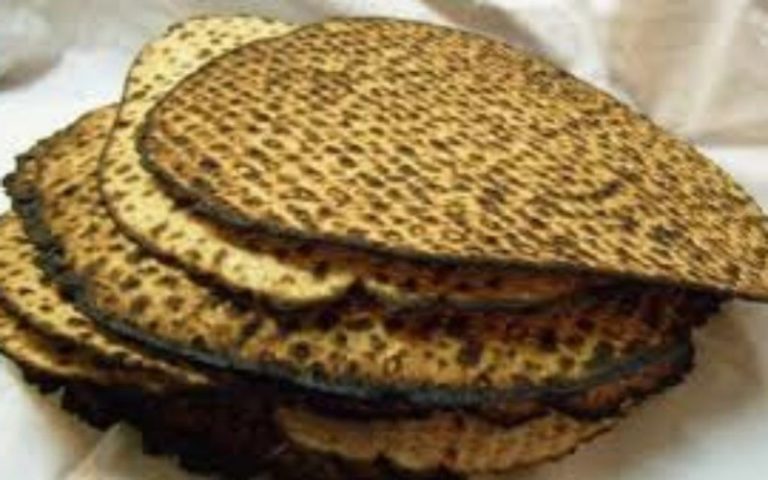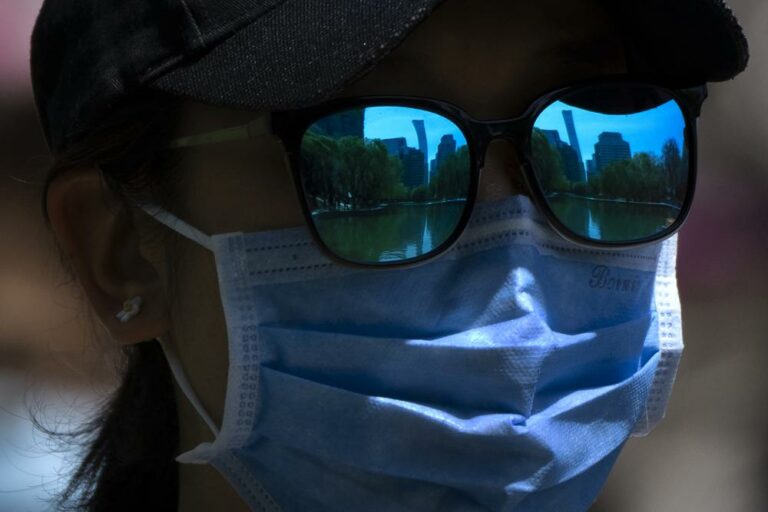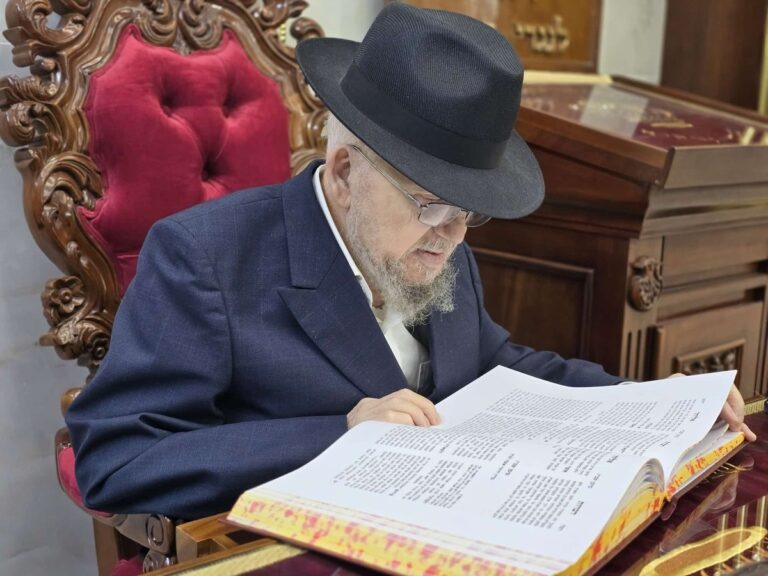 [Written By Rabbi Moishe Lebovits – KOF-K Kosher Supervision]
[Written By Rabbi Moishe Lebovits – KOF-K Kosher Supervision]
To subscribe for free to emails and see archives visit www.thehalacha.com
The Learning from this article should be in memory of my Rebbe, Harav Yisroel Belsky zt”l
(Volume 5 Coming Soon!)
The topic of lo yilbash and how it relates to wearing women’s clothing has been discussed in a previous issue of Halachically Speaking. In this article we will discuss the issue of men dyeing their hair. May one dye his hair when he reaches an advanced age and the gray or white does not agree with him? What about dyeing hair for shidduchim or in order to get a job? Is it permitted to take a pill that colors hair? Can one comb hair even though this might cause some white hairs to fall out?
Source
Cutting hair on Shabbos is forbidden because of the melacha of gozez (shearing).[1] The Gemorah[2] discusses how many hairs must be trimmed in order to transgress the issur. However, everyone agrees that it is forbidden to remove even one white hair from black hair on Shabbos.[3] The Gemorah adds that this is forbidden even during the week because of the isssur of lo yilbash,[4] which forbids men from indulging in women’s activities. Rashi[5] clarifies that this refers to activities that women do to beautify themselves.
The Rambam[6] as well as the Shulchan Aruch[7] codify the above statement as halachah and maintain that a man is not allowed[8] to cut even one white hair[9] from his head or beard (see below),[10] and one is not allowed to color or dye his white hairs black.[11] Here too, the action is forbidden because women do this to beautify themselves.[12]
D’oraisa or D’rabbanan
There is a discussion in the poskim if this issur is a d’oraisa or d’rabbanan.[13] The consensus of many poskim is that the issur is d’rabbanan in nature.[14]
Dyeing Hair White
A man is permitted to dye his hair white and there is no issue of lo yilbash.[15] Women would not dye their hair white, as they do not consider it a sign of beauty.[16] This might apply to someone who does not want his hair half black and half white and wants a uniform color.
Reversing the Dye
A very interesting question is discussed in the poskim. If one dyed his white hair black, is he obligated to dye his hair back to white, or may he keep his hair as is? The ruling is that once his hair is black it is not recognizable that he did anything wrong. He cannot undo the issur, but he is not obligated to turn it back to white.[17]
Using a Powder
Technically speaking, if a powder is only sporadically effective, it would be permitted to use it. However, since it works in most cases it is not considered a grama and it is not permitted.[18]
One’s Intention
The Bach[19] is of the opinion that one only transgresses the prohibition lo yilbash if his intention is to mimic women.[20] If one has a different motive it would be permitted. Some poskim disagree with the Bach.[21] Other poskim rely on the Bach.[22] In a pressing situation, one can be lenient.[23]
This has ramifications regarding our discussion as we will see below.
Done by a Non-Jew
Some poskim permit a non-Jew to dye a Jew’s hair,[24] while others disagree.[25]
Dyeing Hair for a Job
There is a discussion in the poskim if a man is allowed to dye his hair black in order to receive a job. Since the person’s intention is not for beauty, but to avoid the appearance of weakness, it is possible to rely on the Bach above and the fact that many poskim say that the issur is d’rabbanan in nature. Nevertheless, one should ask a non-Jew to do it, or he should dye his hair brown instead of black.[26]
In any case one should not fool the employer in thinking that he is much younger than he really is.[27] It would seem that a young person who has white hair is not misleading the prospective employer, and he is simply ensuring that his premature white hair will not ruin his chances to get a job. However, an older person will be cheating the boss if he makes him think that he is younger.[28]
Some explain that there is no issue of misleading people, since today men shave their beards off completely and look younger.[29]
The dissenting opinions say that the Bach is not to be relied upon, plus there are those who hold the issur is d’oraisa.[30] In addition, some opine that one’s intention is also to look good which would be an issue of lo yilbash.[31]
Dyeing a Beard
The Rambam prohibits dyeing a beard.[32] According to the lenient opinions regarding dyeing hair, one who has a reason to dye his beard black and is not doing it to beautify himself is permitted to do so.[33] There is a line of reasoning that perhaps since women do not have beards there is no issur for a man to dye his beard. However, many teshuvos dealt with dyeing the beard and none of them utilized this argument.[34]
Combing Hair
One who has white and black hairs may comb his hair in the normal manner even if it will definitely happen that a white hair will fall out, since it is done without the intention of removing any white hairs with the combing.[35] However, if the removal of strands of white hair is beneficial for him since he wishes to look young anyways, it would not be allowed.[36] This is common with those who play with the hair on their beards or scratch their head vigorously and (white) hairs fall out. An elderly person would not be doing so for beauty,[37] but this may not be the case for younger people.
Haircut
If the barber removes white hairs while giving a haircut, it would only be permitted if the person does not care about them.[38]
A Growth on the Face
One who has a growth on his face which is growing white hairs may remove the growth and the white hairs and it is not an issue of lo yilbash.[39] In any case it is still better to have it done by a non-Jew.[40]
Half White Half Black
Many years ago a man found himself in an embarrassing position. Half of his head and beard were black, while the other half was white. The question was whether he could dye his hair black. Some poskim were lenient since it is painful for him to look that way, and the issur according to many poskim is d’rabbanan in nature.[41] It addition, his intention was not to beautify himself, but simply to avoid looking strange.[42]
Others disagreed, and ruled that he should use various types of powders to remove the hair.
Young Male
Harav Shlomo Zalman Aurbach zt”l[43] permitted a young man whose hair had prematurely turned gray to remove the offensive hairs.[44] This is similar to the previous question regarding half of the beard that was white and half black. He ruled that we may rely on the lenient opinion, as many poskim permitted it. It is considered a mum because it is different than everyone else his age.[45]
If It Is Done By Males As Well
If an act of beautification was done by women, and then adopted by non-Jewish men,[46] many poskim hold that it is permitted for a Jewish man to do it as well.[47] According to those opinions, one would be able to dye his hair since men do it as well.[48]
Others argue that the heter applied to removing hair from certain areas of the body, and one cannot compare the two.[49] In addition, if one were to rely on the heter then one would uproot the entire Shulchan Aruch because the non-Jews perform a certain act.[50]
Discomfort
A question was posed whether one is allowed to cut his white hairs since they are growing in an area (face or beard) which causes discomfort, and he would do the same even if they were black. It was permitted since he is not doing so to look like a woman.[51]
If He Has Blond Hair With Black Hair
There is a discussion if one is permitted to remove blond hair on a head of black hair. Since women who have streaks of blond in black hair would remove the blond, it is forbidden for a man to do so.[52]
Swallowing a Pill
It is possible to take a pill that causes the hair to turn black. Is this permitted l’halachah? There were poskim who permitted this,[53] but the overwhelming opinion was that this is not allowed.[54] Harav Moshe Feinstein zt”l[55] explained the strict position as follows (loose translation): Is the issur to do an act that is done by women, or is it to achieve a result like a woman? According to the first approach, pills would be permitted, since everyone takes pills for different things. Therefore, it is not recognizable that it is being done to beautify oneself. However, according to the second approach a pill would be prohibited even if women do not take pills to dye their hair, since the outcome mimics women’s actions.
This applies when one is doing it for beauty, not for a different motive.
It would be permitted to take a pill that prevents hair from turning gray or white.[56]
Dyeing A Different Color Than Black
Up until now we were discussing a situation where the man wishes to dye his hair black. Would the same halachah apply for one who wishes to dye his hair a different color than black (i.e. brown)?
Although the issur was mentioned regarding black from white, some poskim feel that it applies to other colors as well, as long as one is doing it for beauty. In addition, someone with blond hair would not be able to remove gray or white hairs, or dye them blond. Chazal referred to black hair because most people have black hair. If one dyes it “an ugly color” like blue then it is permitted.[57]
It would seem that since today women dye their hair to colors other than black,[58] then a man would be forbidden to dye his hair to those colors as well.[59]
Shidduch
A male who is in shidduchim might wish to dye some white hair so as not to alarm the potential girl he is dating. Is this permitted? Many poskim permit this practice since his purpose is to improve his chance for marriage, not for beautification.[60] This is borne out by the fact that he did not wish to do this before his was in shidduchim.[61]
Others point out that his goal is not to dye his hair to look young, as he actually is young.[62] This may be even considered as a refuah since not getting married because of his white hair will cause agmas nefesh.[63] There is no geneivas daas by dyeing his hair, since it is normal that men his age have black hair.[64]
However, others say that his intent is to look younger, in which case dyeing one hair would not be allowed. Others say that it can be done through a non-Jew.[65]
Another option is to shave off the white area[66] (if it is a small area and one will not look odd by doing so).
Due to the different opinions one who has this question should consult with his Rav.[67]
Young Children
One whose child has white hair and wishes to dye it black because it looks odd may do so. This is not for beauty purposes, and it is easy to be lenient for a child.[68]
To Look Younger
Some older people wish to color their hair black, not to beautify themselves, but to look younger. This is not allowed, since it is obvious that he is doing it to look nicer.[69]
Baby Powder – Purim
A man may place baby powder in his hair to look old.[70] This is common on Purim when one is dressing up.[71] In addition, a male is permitted to dye his hair blue or other colors which are so distinct that women would not dye their hair with those colors.
Vitiligo
Vitiligo is a disease that causes a patch of skin to become much lighter than the rest of the body.[72] The cause of this is not known, but there are a few theories.[73] The poskim discuss whether dyeing that patch of skin to look like the other normal skin would be an issue of lo yilbash like dyeing the hair. One of the treatments for this is called depigmentation, which colors the rest of the body white like the affected area (this is usually done if one has the spots in more than fifty percent of the body). This treatment is permitted. One may not dye his hair because he wishes to beautify himself (in many cases), but here he simply wishes to look like other men who have a uniform shade of skin.[74]
Why Does Hair Turn Gray or White?
Did you ever wonder why hair color changes when people get older? There is no definite explanation, although a theory is offered. Hair has two pigments, dark and light. They blend together to make up the range of hair colors. Melanin is made up of specialized pigments called melanocytes. As long as hair is being formed, melanocytes inject pigment into cells containing keratin. With age comes a reduction in melanin. The hair turns gray and then eventually white.
Natural Ways to Keep Hair Black
There are many ways that one can avoid having his hair turn gray or white until much later on in life.
A faulty diet, mental worries, and lack of vitamins cause one to gray early. White flour, soft drinks and the like, sap a person’s energy and cause gray hair and premature old age.
[1] Maseches Makkos 20b, Shulchan Aruch O.C. 340:1.
[2] Maseches Makkos ibid. Refer to Maseches Shabbos 94b, Nazir 59a, Bava Metziah 60a.
[3] Refer to Rashi Maseches Makkos ibid “b’melakeit” why even removing one hair is forbidden in the above case.
[4] Devarim 22:5.
[5] Maseches Makkos ibid “af.” Refer to Taz Y.D. 182:7.
[6] Hilchos Avodas Chochavim 12:10. See Kol Bo 26, Chachmas Adam 90:2.
[7] Y.D. 182:6. Refer to Tur Y.D. 182, Beis Yosef 182, Levush 6, Kitzur Shulchan Aruch 171:3.
[8] There is a dispute whether one gets makkos for such an action (The Rambam ibid holds you do while the Ravaad argues, see Beis Yosef Y.D. 182). In regard to cutting eyebrow hair or extra hair on a hand see Avnei Yushpei 4:91, 6:118:3.
[9] Rambam and other poskim ibid, Levush 6. Refer to Ravaad who argues. On the dispute between the Rambam and Ravaad see E’ven Yisroel 1:page 11 (Ravaad on the Rambam Hilchos Akum 12:10, Hapardes 22:pages 19-22). The Maharim Shick (Y.D. 172) says when he has a lot of white hairs and he pulls one white hair there is nothing wrong since he is not making himself more beautiful with that action.
[10] Refer to Aruch L’ner Maseches Makkos ibid who wonders why the Shulchan Aruch does not mention the issur regarding dyeing the beard.
[11] Tur Y.D. 182, Chachmas Adam 90:2. See Yalkut Yosef O.C. 340:page 106.
[12] Biur HaGra Y.D. 182:6. Refer to Sefer Hameor 27-28.
[13] Refer to Beis Yosef 186, Biur HaGra Y.D. 182:6, Sdei Chemed lamed 116:pages 91-92, V’yan Yosef 1:124.
[14] Ritvah Maseches Makkos ibid, Erech Shai Y.D. 182, Minchas Elazar 4:23, Sdei Chemed lamed 116:pages 91-92, Darchei Teshuvah Y.D. 182:15, Minchas Yitzchak 6:81, Chelkes Yaakov Y.D. 2:87:1, Sreidei Eish O.C. 2:81, Tzitz Eliezer 13:77.
[15] Beis Yosef Y.D. 182, Taz Y.D. 182:7. Refer to Ashrei Haish Y.D. 1:page 145:20 about dyeing hair white to act as a Rosh Hayeshiva.
[16] Beis Yosef ibid, Divrei Pinchas 53.
[17] Betzel Hachochmah 5:127.
[18] Mahari Shteiff 55.
[19] See Arugas Habosem 138:4, Maharam Shick 72, Avnei Tzedek 72. Refer to Shulchan Aruch C.M. 228:9.
[20] Refer to Sefer Hameor 27 for an in depth explanation on this.
[21] Yad Hakitana, See Darchei Teshuvah 9, Divrei Chaim 62, Torah Leshma 214. This is even if done to avoid embarrassment (See E’ven Yikra 3:93, Divrei Chaim ibid).
[22] See Darchei Teshuvah ibid, Yabea Omer 6:14:4, Shraga Hameir 7:124, Be’er Moshe 8:8:4, Shevet Halevi 2:63, Igros Moshe O.C. 4:75:3 seems to be lenient, Minchas Yitzchak 6:61, Avnei Tzedek 72.
[23] Harav Yisroel Belsky Shlita, see Maharsham 2:243, Yabia Omer 6:14:6, Rivevos Ephraim 4:212.
[24] Beis Hayotzer Y.D. 45:page 54, Avnei Zichoron 3:39, Shearim Metzuyanim B’halachah 171:1.
[25] Refer to Maharsham 2:243-244, Sdei Chemed lamed 116:page 92, Betzel Hachochmah 5:127:7, 128, Lehoros Nosan 2:70, Birchos Yehudah Y.D. 8, Melachim Omnaich page 321:16. See Asei Lecha Rav 2:50 who says this alone would not be enough to be lenient. Refer to Metzion Orah 4. Some opine that one who does the act of removing the white hair is doing an issur d’rabbanan. This is talking where someone else does it to another person. (Beis Hayotzer Y.D. 45 page 54).
[26] Igros Moshe Y.D. 2:61, Sreidei Eish O.C. 2:81, Tzitz Eliezer 22:14, Noam 8:page 279, Sefer Hameor 27-28. Refer to Birchos Yehudah Y.D. 8 in depth, Mayim Hahalachah 2:23, Avnei Shmuel 31:page 105, Yivakesh Torah 47.
[27] Igros Moshe Y.D. 2:61. Refer to Sefer Chassidim 379, Taam Boruch 38, Ashrei Haish Y.D. 1:page 145:19-20.
[28]Avnei Zichoron 3:39 (end). Refer to V’ein Lamo Michshol 2:page 215.
29 Sharei Tzion (journal) 3:page 7b.
[30] Refer to Birchos Yehudah Y.D. 8, Divrei Pinchas 53.
[31] Refer to Teshuvos V’hanhagos 1:461.
[32] Also see Beis Yosef Y.D. 182, Chinuch 542.
[33] Sreidi Eish 2:41:page 467. Refer to Shoneh B’shoneh 28:8:pages 16-20.
[34] Metzion Orah 4.
[35] Maharim Shik Y.D. 172 (end). See ibid 173.
[36] Halachos Ketanos 2:258. Refer to Darchei Teshuvah Y.D. 182:16, Agura B’oaleich pages 28b-29.
[37] Tzohar 3:pages 156-157.
[38] Snif Melucha page 75:2:footnotes 5-6, V’ein Lumo Michshol 2:pages 210-211.
[39] Refer to Levushei Mordechai Y.D. 100, Minchas Yitzchak 6:81.
[40] Ibid.
[41] Refer to Minchas Elazar 4:23, Machaneh Chaim Y.D. 2:30, Chelkes Yaakov Y.D. 87. Refer to Darchei Teshuvah Y.D. 182:17, Shearim Metzuyanim B’halachah 171:1, Sdei Chemed lamed 116:pages 91-92, Minchas Elazar 4:23.
[42] Machaneh Chaim ibid in depth. Refer to Ashrei Haish Y.D. 1:page 145:19.
[43] Quoted in Nishmas Avraham Y.D. 182:page 75 (old). Refer to Kovetz Teshuvos (Harav Elyashiv zt”l) 3:128.
[44] Refer to Maseches Shabbos 50b, Tosfas “b’shvil”, Shulchan Aruch Y.D. 156:2.
[45] Nishmas Avraham Y.D. 182:pages 137-141 (new print). In addition hair growing between a male’s eye brows is a mum and one may remove it (ibid page 140 quoting the opinion of Harav Shlomo Zalman Aurbach zt”l). Also see Chevel Nachloso 5:23, Mishneh Halachos 4:247.
[46] Refer to Prisha 182:5, V’yan Dovid 1:124, Pami Yaakov (journal) 23:page 79. Also refer to Lehoros Nosan 2:70, Sharei Halachah U’minhag Y.D. 37.
[47] Ritvah Avodah Zarah 28a, Nemukei Yosef Maseches Makkos page 4a, Beis Yosef Y.D. 182, Sharei Halachah U’minhag Y.D. 37. See Rambam Hilchos Avodah Zarah 12:9.
[48] See Sreidei Eish O.C. 2:81, Mahari Shteiff 55, V’yan Dovid 1:124, Shemesh U’mugen Y.D. 19, Yaskil Avdi O.C. 8:17:6, Sharei Tzion (journal) 3:pages 6-7, Otzer Nechmad 4. Refer to http://men.webmd.com/guide/gray-anatomy?page=3 where a very small percentage of men dye or color their hair. On the other hand men’s home hair-color sales reached 113.5 million a 50 percent increase in five years (see www.howstuffworks.com) See Shulchan Halevi 1:pages 145-146.
[49] Lehoros Nosan 2:70. See Chelkes Yaakov Y.D. 87. One possible reason offered is that since dyeing hair is not common one cannot assume if men do it then it would be a heter (Lehoros Nosan 2:70).
[50] Maharsham 2:243, Metzion Orah 4.
[51] Tzitz Eliezer 13:77. See Shulchan Halevi 1:page 146 quoting the opinion of Harav Yisroel Belsky Shlita.
[52] Kovetz Beis Aron V’Yisroel 90:pages 83-84.
[53] Refer to Birchos Yehudah Y.D. 8
[54] Daas Sofer Y.D. 64, Betzel Hachochmah 5:17, Igros Moshe Y.D. 1:82, Chelkes Yaakov Y.D. 87, Beer Sarim 6:60. See Sharei Halachah U’minhag Y.D. 38, Vayitzvar Yosef 66.
[55] Y.D. 1:82. Also see Beer Sarim 6:60.
[56] Beer Sarim 6:60. See Ashrei Haish Y.D. 1:page 145:22 about swimming in the Dead Sea which turns ones gray hear into black hair.
[57] Ketzos Hashulchan 7:pages 168-169.
[58] Refer to Teshuvos V’hanhagos 4:195 who seems to say men do not do it today.
[59] Refer to Birchos Yehuda Y.D. 8. (end), V’yan Dovid 1:124, Snif Melucha pages 236-237. See Sdei Chemed lamed 116:page 93, Ashrei Haish Y.D. 1:page 145:21.
[60] Refer to Igros Moshe Y.D. 2:61, Beer Moshe 8:8 pages 19-21, Yaskil Avdi O.C. 8:17:6, Divrei Pinchas 53, Shemesh U’mugen Y.D. 19, Oles Yitzchak 2:161, Yided Hashem 2.
[61] Ohr Hameir 26:page 146.
[62] Others are not convinced that this is correct since who said because of the dying to black he will get married maybe it is another reason and maybe someone will marry him with white hair (V’yan Dovid 1:124). See Ashrei Haish Y.D. 1:page 145:19.
[63] Asei Lecha Rav 2:50, Ohr Hameir 25:pages 143-147.
[64] Asei Lecha Rav 2:50.
[65] Ohr Hameir 26:pages 143-147.
[66] Shevet Halevi 3:111:3.
[67] Harav Yisroel Belsky Shlita in Shulchan Halevi 1:pages 146-147.
[68] Teshuvos V’hanhagos 1:461.
[69] Shraga Hameir 8:108.
[70] Refer to Chut Shani Shabbos 4:page 383.
[71] Snif Melucha page 83:12.
[72] For more on this see http://en.wikipedia.org/wiki/Vitiligo.
[73] For more on this see http://www.medicinenet.com/vitiligo/article.htm.
[74] Matnas Moshe Y.D. 75. Refer to Maseches Bava Kamma 85b. The same is true for fixing a tooth or for making ones teeth straight through braces Matnas Moshe (ibid). See Shevet Halevi 6:118:3.










